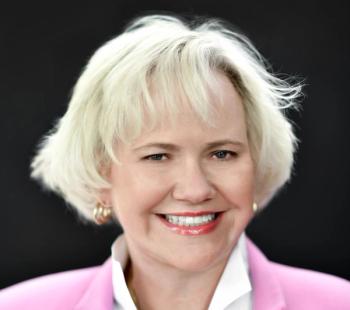
Mental health: Clinicians can look out for each other
Healthcare workers can engage colleagues who are struggling and let them know they aren’t alone. Leaders also need to be checking on their teams.
Many doctors and nurses continue to battle burnout, and some are leery of receiving help or even sharing their feelings with their colleagues.
Sarah Wells, a clinical practice specialist with the American Association of Critical-Care Nurses, has written extensively about mental health and shared her own personal struggles.
Clinicians can help their colleagues by checking in on them from time to time. A well-placed expression of concern and empathy can go a long way, she says. She says many people are reluctant to get help, due to fears of being perceived as weak or ineffective.
“We have to overcome that stigma,” she says. “And the best way to do that is just with conversation. Something that any nurse or any person can do is check in with each other and … really just normalizing conversations around mental health."
It can begin as simply as asking how a colleague is feeling. If someone appears to be struggling or down, Wells suggests initiating a conversation about the heavy patient load.
Wells also says demonstrating a little vulnerability can also encourage someone to speak up if they’re having a tough time. For example, she says a nurse could say, “It's a really busy day. I'm exhausted. How are you feeling?”
“Sometimes a little self disclosure about talking about yourself can build rapport with someone if you don't know them as well,” Wells says.
(See part of our conversation with Sarah Wells. The story continues below.)
Clinicians who know each other well and are closer can probably feel more free to be more direct, suggesting a short walk. If feasible, a nurse could offer a colleague help for a few minutes, so the co-worker can walk outside for fresh air or a cup of coffee.
“I fully believe coffee cures everything so that those are the little gifts that I feel like anyone can provide,” Wells says. “But the more we're connecting, the more we're providing community, whether that's in person or online, is really what I think anyone can help offer to their co-workers, their friends and colleagues.”
Wells also says the break room can be an invaluable place to vent.
“The break room I think is like a safe space for many people to have really profound conversations when you're shoving food in your mouth and trying to get some sustenance between patient tasks,” Wells says.
If there’s a sufficient comfort level, Wells suggests it’s worth pointing out that employee assistance programs can offer some help. The American Association of Critical-Care Nurses also offers a peer support community, and Wells says materials can be shared with colleagues or posted in break rooms.
“I think those are all ways to kind of help support people,” she says. “And also just trying to destigmatize language around mental health.”
Wells says it’s important to understand some people may be struggling much more than they realize, and that’s critical to understand in dealing with co-workers or patients, who may be acting out.
“We're all carrying heavy loads, and we never know what those are just by looking at people or having brief interactions,” Wells says.
Healthcare managers and executives must pay more attention to the well-being of their staff, wellness leaders say. Managers need to ask their teams how they are doing and take time to listen to their concerns, especially if they want to retain good workers. Wells also points to the need to address staffing shortages, which she says is contributing heavily to the stress and burnout of nurses.
Healthcare leaders should explore training in trauma-informed leadership, Wells says. After caring for patients in the COVID-19 pandemic for more than three years, she says healthcare workers have all experienced trauma to some degree.
“Looking into those styles of leadership skills can be really helpful, because words and language and conversations can help so much,” Wells says.
Wells says that clinicians aren’t just taking care of themselves by addressing their mental health needs. They’re probably going to take better care of their patients.
In describing her own mental health journey, Wells says, “I'm a better nurse for it because I'm a lot more empathetic and attuned, often to my patients’ mental health issues.
“I think there's a lot of pieces that come out of my own mental health journey that made me a much better nurse,” she says. “And so if you're out there and think that you're by yourself, and it makes you a bad nurse, you're a great nurse, and you're probably a better nurse, because you're taking care of yourself. And you always have to take care of yourself so you can take care of everyone else.”
Getting help






















































































